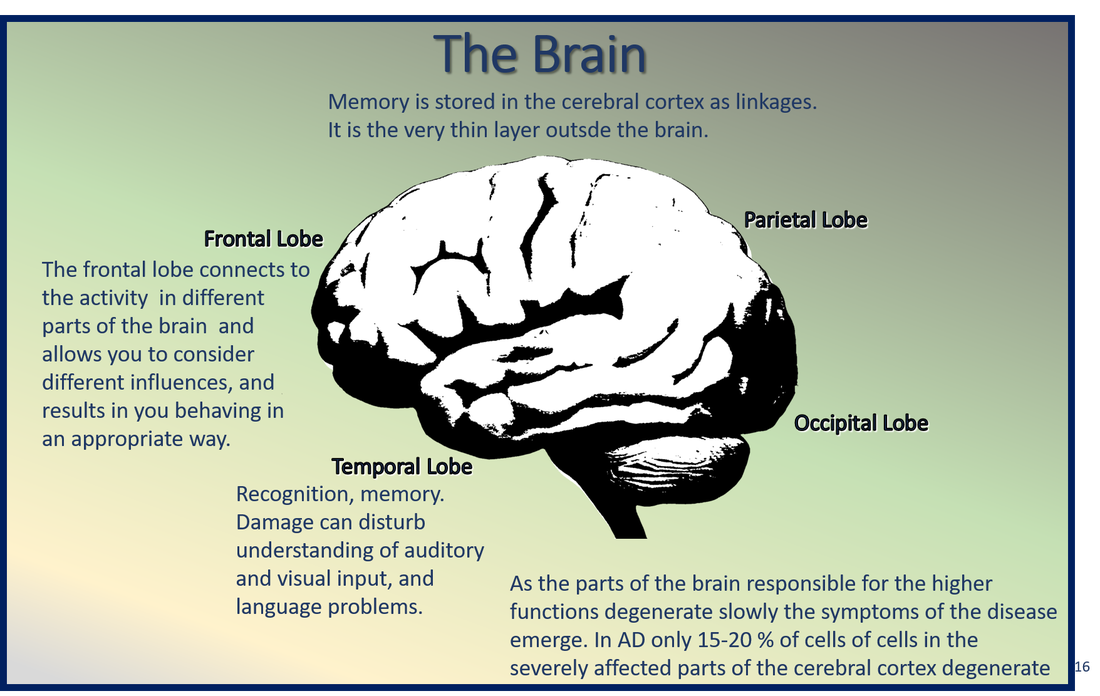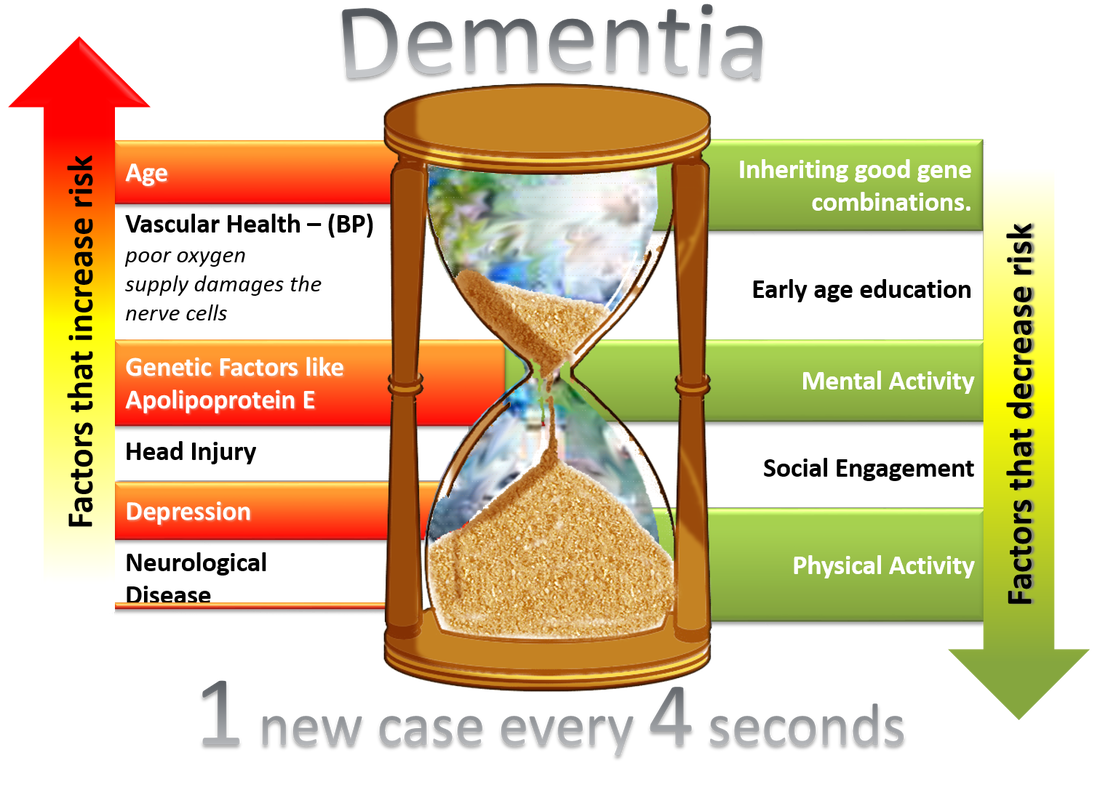Alzheimer's Disease: Pathology, Causes & Genetics
Dr. Alois Alzheimer, a clinical psychiatrist and neuroanatomist, reported in 1306 that he had found plaques and neurofibrillary tangles during the autopsy of the brain of one of his patients, Auguste Deter. She had exhibited paranoia, progressive sleep and memory disturbance, aggression, and confusion. The disease came to be known as Alzheimer's Disease (AD). Now we know that the the senile plaques that form in the brain are of beta amyloid (Aβ) and the tangles are of tau protein. Aβ damages synapses, and kills neurons. The hippocampus and entorhinal cortex are most severely affected in AD. The hippocampus is the area of the cortex that is critical for learning and creating new memories. The entorhinal cortex is like a network for memory and navigation.
Genes play a part. The ε4 allele of apolipoprotein is the major genetic risk factor for AD. There are three types of the APOE gene: APOε2, ε3 and ε4. Everyone has two copies of the gene, one from each parent resulting in various combinations. Having one APOε4 allele increases the risk of getting AD, while having two increases it much more. However having two APOε4 genes does not necessarily lead to the disease.
General health conditions may aggravate AD, if they contribute to chronic cellular damage or loss of neurons and synapses. No environmental agents (e.g., viruses, toxins) have been proven to be directly involved in the pathogenesis of AD. It is often speculated that late-onset AD is the result of unknown environmental factors acting on a predisposing genetic background. The exact reason for the development of tangles and plaques is still not understood. With more focus on the disease and greater effort and being put into research, one hopes that there will be a way to prevent the disease in the future.
Genes play a part. The ε4 allele of apolipoprotein is the major genetic risk factor for AD. There are three types of the APOE gene: APOε2, ε3 and ε4. Everyone has two copies of the gene, one from each parent resulting in various combinations. Having one APOε4 allele increases the risk of getting AD, while having two increases it much more. However having two APOε4 genes does not necessarily lead to the disease.
General health conditions may aggravate AD, if they contribute to chronic cellular damage or loss of neurons and synapses. No environmental agents (e.g., viruses, toxins) have been proven to be directly involved in the pathogenesis of AD. It is often speculated that late-onset AD is the result of unknown environmental factors acting on a predisposing genetic background. The exact reason for the development of tangles and plaques is still not understood. With more focus on the disease and greater effort and being put into research, one hopes that there will be a way to prevent the disease in the future.
Sources:
Hippius H, Neundörfer G. The discovery of Alzheimer’s disease. Dialogues in Clinical Neuroscience. 2003;5(1):101-108.
Bird TD. Alzheimer Disease Overview. 1998 Oct 23 [Updated 2015 Sep 24]. In: Adam MP, Ardinger HH, Pagon RA, et al., editors. GeneReviews® [Internet]. Seattle (WA): University of Washington, Seattle; 1993-2017. Available from: https://www.ncbi.nlm.nih.gov/books/NBK1161/
Hippius H, Neundörfer G. The discovery of Alzheimer’s disease. Dialogues in Clinical Neuroscience. 2003;5(1):101-108.
Bird TD. Alzheimer Disease Overview. 1998 Oct 23 [Updated 2015 Sep 24]. In: Adam MP, Ardinger HH, Pagon RA, et al., editors. GeneReviews® [Internet]. Seattle (WA): University of Washington, Seattle; 1993-2017. Available from: https://www.ncbi.nlm.nih.gov/books/NBK1161/


